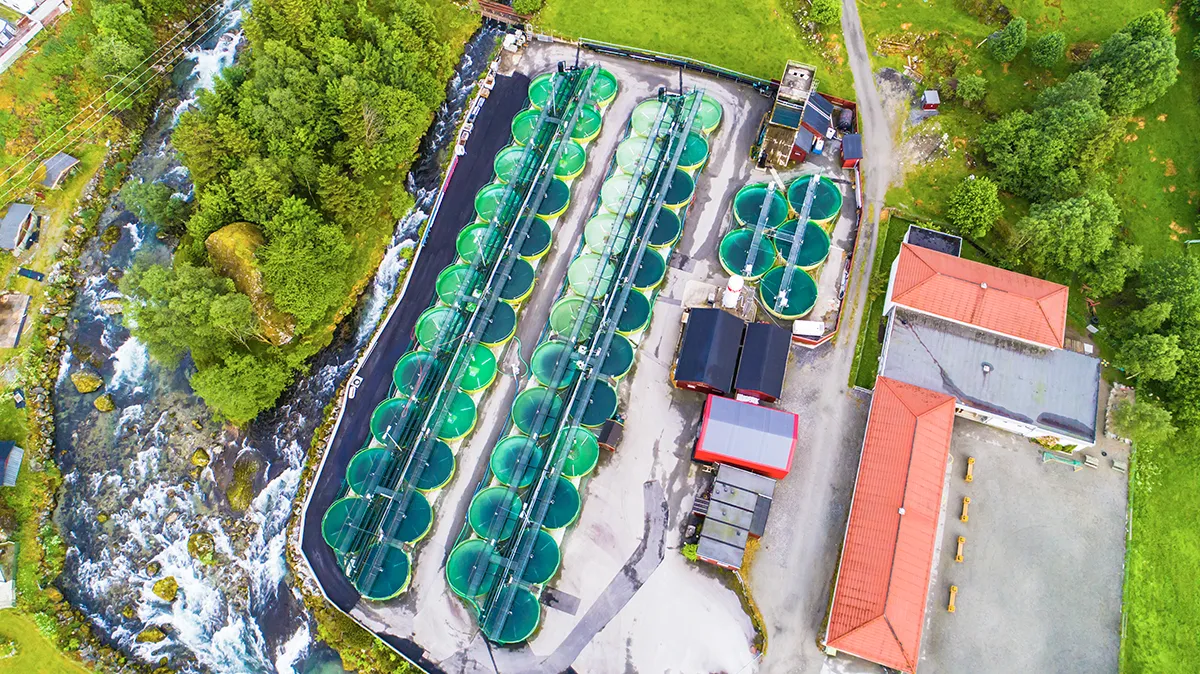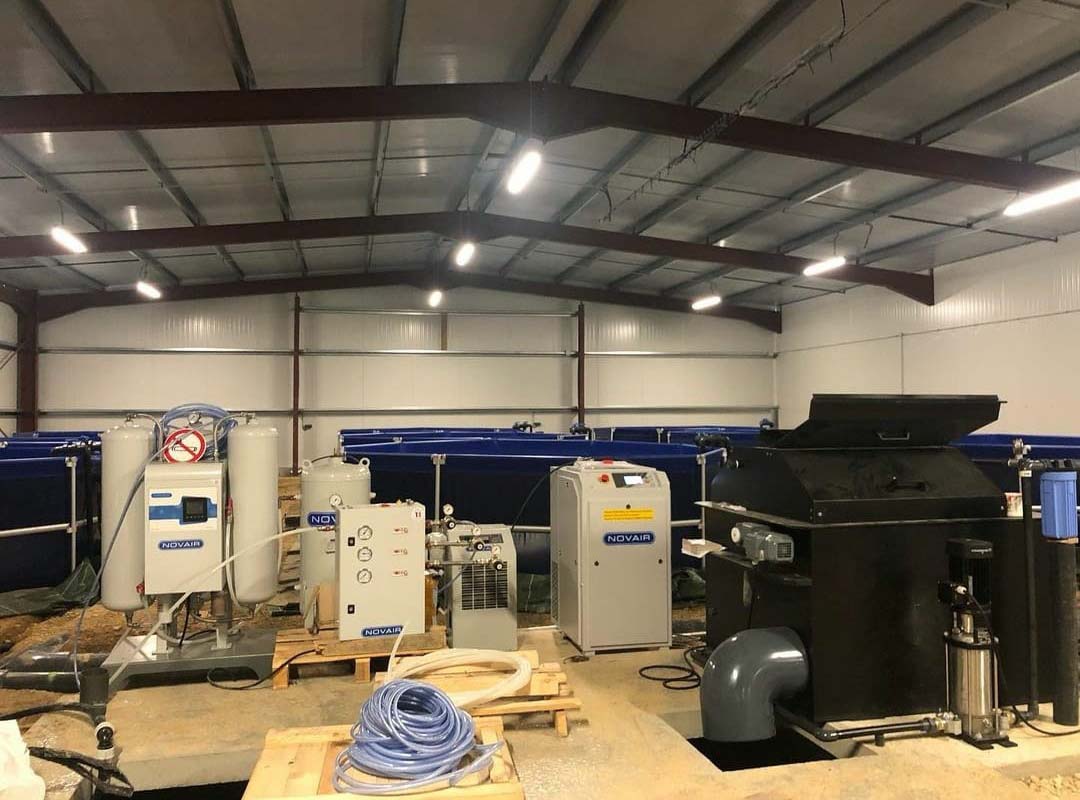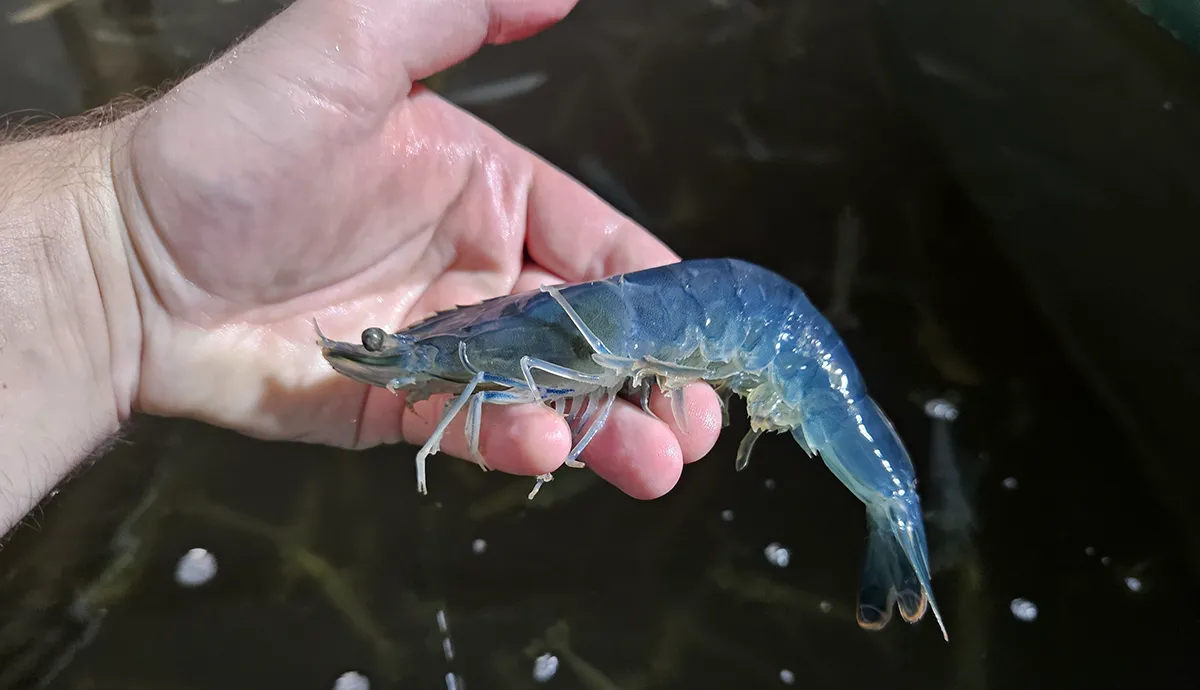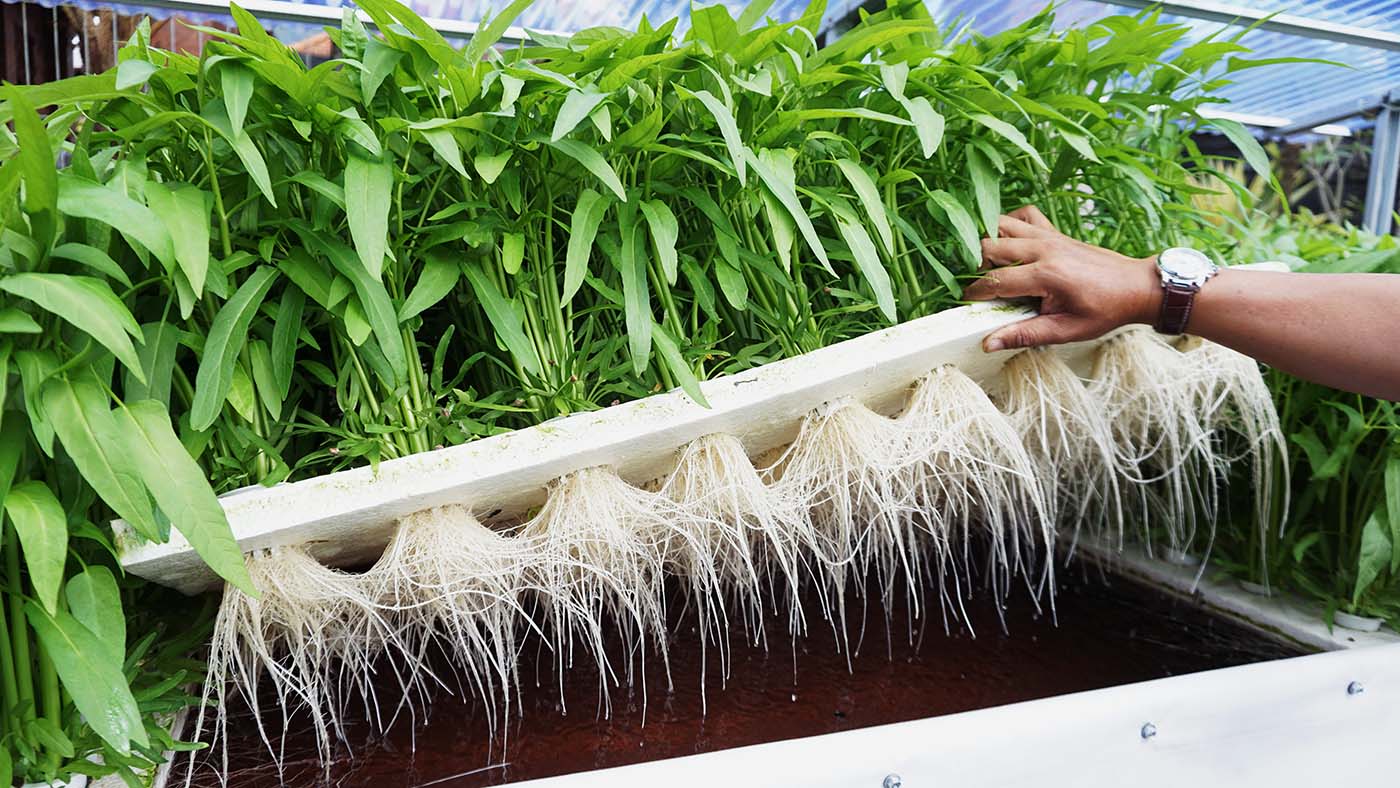

Aquaculture is currently a rapidly expanding industry, vital for meeting the increasing global demand for aquatic products. With traditional fishing yields stagnating, aquaculture is emerging as the most dynamic method to ensure a sustainable seafood supply, particularly for fish and crustacean. Over the past several decades, this sector has experienced remarkable growth, with an annual increase of approximately 9% over the last 30 years, according to the FAO. By 2012, aquaculture accounted for nearly half of the global fish supply for human consumption, a figure that continues to rise. This trend is especially pronounced in Asia, where countries like China dominate global aquaculture production. In Europe, Norway stands out as the leader in Atlantic salmon production. Other countries such as the UK, France, Italy and Spain are also significant rainbow trout and marine fish producers.
In this context, optimizing farming conditions has become a key focus for aquaculture farms. Oxygenation of aquaculture tanks plays a central role in this endeavor. Maintaining optimal oxygen levels in water is crucial to ensuring fish or shrimps health, well-being, and, consequently, the profitability of the production. Advanced technologies, such as oxygen diffusion systems, not only improve water quality but also enhance yields and reduce health risks. Thus, oxygenation becomes a valuable asset for aquaculture operations, contributing to the growth of aquatic species and the sustainability of the industry.
Download the product datasheet

Fish and crustaceans depend on oxygen dissolved in water for respiration. This process is essential to their survival and growth. Through their gills, fish extract oxygen from the water, enabling them to perform various vital functions such as digestion and regulating their metabolism. When oxygen levels in the water are insufficient, this causes oxidative stress, disrupting fish growth and potentially leading to premature mortality. In addition, an oxygen deficit affects the overall balance of the pond, which can lead to a deterioration in water quality and disrupt the operation of filtration systems.
To prevent these problems, it's essential to maintain adequate oxygenation in tanks. Here are the main factors influencing fish oxygen requirements:
To effectively meet these needs, water oxygenation must be optimized with oxygen diffuser systems, ensuring stable water quality and a healthy environment for farmed species.
Tank oxygenation management is one of the major challenges in aquaculture, particularly in systems with high stocking densities. When densities exceed 30–35 kg/m³, traditional aeration is no longer sufficient to maintain optimal oxygen levels. Aeration, which involves introducing air into the water, increases oxygen concentration up to a certain threshold but is limited by factors such as atmospheric pressure and the solubility of oxygen, which fluctuate with water temperature and salinity.
To support high-density systems, oxygenation becomes critical for maintaining adequate saturation levels. Specialized technologies such as diffusers, cones, or Venturi systems are employed to ensure targeted and efficient supersaturation. These systems achieve oxygen concentrations that meet the specific needs of the fish while reducing the risks associated with oxygen deficiency.
Oxygenation is therefore essential to ensure the health and performance of fish in high-density environments. Without optimal oxygen management, risks such as stress, disease, and mortality increase, ultimately compromising the profitability of aquaculture operations.

Oxygen generator at the fish Farm “La Truite Fleurie”
Optimum oxygenation contributes to the health and growth of fish and shrimp, ensuring efficient respiration and preventing hypoxia. Well-oxygenated fish are more active, feed better, and reach optimum size more quickly, which has a direct impact on aquaculture yields. Maintaining stable conditions with diffusers and oxygenation systems reduces oxidative stress and improves overall farm productivity.
Consistently high oxygen levels reduce stress, promote better feed conversion rates, and lower mortality rates. Proper oxygenation also helps maintain a balanced aquatic ecosystem, ensuring healthier conditions for fish.
RAS-based production is growing rapidly. These systems, which recycle farming water through various filtration steps, significantly reduce freshwater consumption in aquaculture farms, addressing current environmental challenges.
In a RAS, water undergoes multiple treatment stages:
The system’s effectiveness depends on rigorous monitoring of parameters via probes and sensors. Among these, continuous measurement of dissolved oxygen concentration using oxygen probes is critical. Given the high stocking densities common in RAS, maintaining adequate oxygen levels is crucial for fish welfare and optimal system performance.
Oxygen injection and dissolution systems are key to maintaining this balance. Biofiltration, which consumes significant amounts of oxygen to break down organic waste, also depends on a consistent and reliable oxygen supply. Combining aeration and oxygenation systems supports the activity of beneficial bacteria and ensures optimal water quality, essential for the growth of farmed species.
There are a number of different methods for effectively dissolving oxygen in water, each tailored to specific needs according to application and operating conditions.
Typically made of ceramic, oxygen diffusers produce fine bubbles that dissolve into the water. Although their oxygenation efficiency is often limited to 20–30%, ceramic diffusers are a reliable solution for backup oxygenation. They help maintain dissolved oxygen levels in ponds even when there is no water renewal.
Oxygen cones enable nearly complete oxygen dissolution by operating at pressures between 1.5 and 2 bars. With efficiencies reaching up to 95%, they are suitable for supersaturating water flow with oxygen by as much as 300%.
These systems are designed to inject oxygen beneath a plate equipped with holes or nozzles. An oxygen layer forms below the plate, and water flows through the nozzles. To function, platforms require a height differential between the water above the plate and the outlet water, typically around 1 meter (equivalent to 0.1 bar of pressure). At this 1-meter differential, oxygen saturation levels of approximately 180–200% can be achieved, and slightly higher with a 1.5-meter difference.
This type of solution is particularly suited for high water flows with low height differentials. The systems are available in rectangular or circular configurations, with oxygenation efficiencies typically ranging between 80% and 85%.
Nanobubble systems use hydrodynamic cavitation to oxygenate water with remarkable efficiency. Measuring less than 200 nanometers in diameter—about 2,500 times smaller than a grain of salt—nanobubbles offer an exceptionally large surface area for gas transfer. This enables highly efficient gas exchange, allowing water to become supersaturated with oxygen up to 300%.
While this technology delivers impressive performance, it remains in the development stage, and large-scale applications are still limited for the time being.
Novair offers innovative on-site oxygenation solutions, perfectly adapted to the requirements of aquaculture. With our pure oxygen generators, oxygen can be produced directly on site, reducing the logistical costs associated with cylinders or liquid oxygen. These technologies enable precise control of the quantities of oxygen produced on site before it is dissolved in the water, guaranteeing optimal conditions for the health and growth of farmed aquatic species.
The use of pure oxygen offers significant advantages over air, thanks to a much higher oxygen concentration. This enables more precise management of saturation levels and better assimilation by the fish, reducing the risk of stress. At the same time, targeted oxygenation via specially designed diffusers optimizes energy costs while guaranteeing ideal aquatic conditions. These solutions contribute directly to the health, growth and performance of fish farms.
When sizing your system, Novair takes several key parameters into account to meet your dissolved oxygen requirements, including :

Novair systems guarantee a constant supply of pure oxygen, suitable for high-density environments. These “plug and play” solutions are economical, high-performance and perfectly designed to optimize feed conversion rates (FCR). They promote growth, reduce fish stress, improve fish health and survival, and increase productivity..
Novair technologies are used in the farming of numerous species, including trout, Atlantic salmon, tilapia, shrimp, sea bream, sea bass and koi carp.
In addition, Novair collaborates with a vast community of players, including renowned breeders in Canada and Chile, state research stations, private mariculture centers, public hatcheries and aquaponic farms. These partnerships testify to the confidence placed in Novair solutions in the world of aquaculture.

Aquaponics, which combines aquaculture and soilless plant cultivation, is based on the integration of aquatic and terrestrial systems, with water recirculated between the two. Oxygenation plays a fundamental role in these systems, as it ensures that fish receive the oxygen they need for growth, while also providing sufficient quantities for the nitrifying bacteria that break down organic waste. Oxygen is also crucial to the health of plant roots, enabling optimum assimilation of nutrients.
The interdependent oxygen needs of fish, plants and bacteria require careful management. Pure oxygen helps maintain a perfect balance, promoting optimum growth of fish and plants while enhancing the efficiency of biological processes. Pumps and filters play a key role in ensuring homogeneous and continuous oxygenation in the aquaponics system.
Efficient oxygen management reduces operating costs by avoiding the need to purchase liquid oxygen or cylinders. What's more, an optimized oxygenation system contributes to higher productivity, by reducing the time needed to reach growth targets. This enables aquaculture operations to maximize profits while reducing dependence on external resources. Optimizing oxygenation pumps and filters further improves overall system efficiency, reducing energy and maintenance costs.
In addition to its economic benefits, effective oxygenation supports sustainable aquaculture production. Optimized systems reduce energy losses and the carbon footprint of operations. By ensuring stable and adequate dissolved oxygen levels, they promote a healthy environment for fish, minimize pollution risks, and maintain the ecological balance of ponds. This approach also helps reduce the environmental impacts associated with intensive production while meeting the growing sustainability demands of the aquaculture sector.
Pond oxygenation plays a central role in the health, growth, and performance of aquaculture systems. The advanced solutions offered by Novair enable operators to optimize their yield while adopting more environmentally friendly practices. With tailored technologies, Novair turns challenges into opportunities, ensuring efficient and sustainable aquaculture. Discover today how these solutions can revolutionize your aquaculture practices and maximize your results.